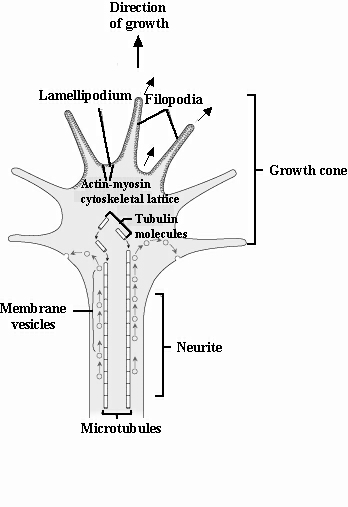The actively growing, most distal, expanded part of a neurite or outgrowing axon extended from a neuron, and instrumental in target location. It moves in an ameboid-like fashion, with extensions called filopodia that grow (out) and retract (in) rapidly from the cone due to rapid polymerization and depolymerixation of internal actin filaments, respectively (see figure below for more structural details). They sense their microenvironment consisting of an array of molecular signals by using guidance receptors (e.g., cadherins, integrins, netrins) on the membrane surface, and move along the extracellular matrix so that the growth cone advances. First identified by Ramon y Cajal (1832-1934) in 1892, which he considered to be his most prominent discovery.
